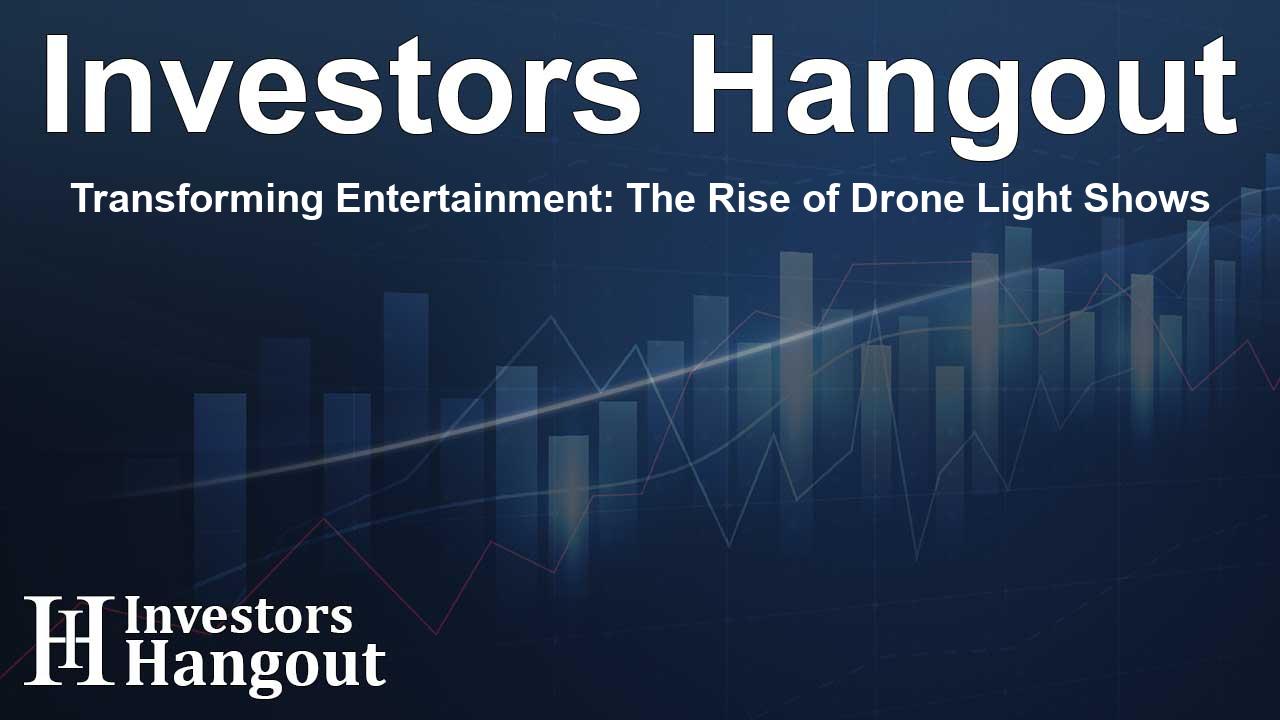Transforming Entertainment: The Rise of Drone Light Shows

The Surge of the Drone Light Show Market
The vibrant prospect of the global drone light show market is capturing the attention of innovators and entertainment enthusiasts alike. Currently valued at around $1.5 billion, the industry is poised for explosive growth, expected to reach approximately $5 billion by the year 2034. This impressive leap reflects the increasing consumer interest in avant-garde forms of entertainment and marketing solutions that leverage aerial technology.
Market Dynamics and Trends
As we explore the market dynamics, it is evident that a blend of technological innovation and heightened consumer expectations are propelling this industry forward at a projected Compound Annual Growth Rate (CAGR) of 13% from 2025 to 2034. Events ranging from corporate functions to major public festivals are looking to incorporate drone light shows as a centerpiece of their entertainment offerings, replacing traditional firework displays with a more environmentally friendly option.
Technological Advancements
One of the primary drivers of this growth is the continued enhancement of drone technology. Innovations in synchronization and flight capabilities allow for increasingly elaborate and synchronized shows that can captivate audiences. As companies work to create mesmerizing aerial displays, they integrate real-time choreography and LED lighting innovations, pushing the boundaries of visual storytelling.
Custom Experiences for Diverse Applications
The demand for tailored experiences is at an all-time high. Companies are designing personalized drone shows that cater to specific events — whether it be a corporate branding exercise or a private celebration. These customizations not only elevate the audience experience but also provide businesses with unique advertising platforms that are both memorable and effective.
Challenges and Opportunities
Despite the promising landscape, the drone light show market faces its share of challenges. Regulatory navigation remains a significant hurdle, with operators needing to comply with evolving drone regulations that vary by region and country. From airspace management issues to safety concerns, these factors necessitate strategic planning and execution.
However, these challenges also pave the way for opportunities. Innovations, such as the integration of augmented reality (AR), are set to revolutionize how drone light shows are perceived. Enhancing visual experiences through AR can create more immersive environments that not only captivate but also engage audiences on a multi-sensory level.
Market Segmentation: A Comprehensive Overview
To fully grasp the diversity within the drone light show market, one must consider its segmentation across various categories. The market structure includes:
By Product Type
- Fixed Wing Drones
- Multi-Rotor Drones
By Application
- Entertainment
- Advertising
- Events
By End User
- Commercial
- Governmental
- Individual Consumers
By Technology
- LED Technologies
- Laser Technologies
By Distribution Channels
- Online Platforms
- Offline Outlets
Regional Insights and Global Implications
Geographically, North America emerges as the largest market, commanding a remarkable 40% of the industry’s revenue due to a sophisticated technology environment and robust entertainment industry. The region’s comprehensive regulatory framework and government support further enhance its market position.
Meanwhile, the European market, accounting for around 30%, is rapidly expanding due to cultural festivals and strategic investments in drone technology. The Asia-Pacific region stands out as the fastest growing at a CAGR of 15%, driven by burgeoning urbanization within major economies and a growing appetite for innovative entertainment solutions.
Looking Ahead
As we peer into the future of the drone light show industry, it is clear that the convergence of technology, creativity, and personalization is set to redefine how we experience entertainment. With increasing investment flowing into this market, the potential for dynamic displays is limitless. Ultimately, as public interest continues to rise, we can anticipate an exciting array of drone-generated spectacles gracing events around the globe.
Frequently Asked Questions
What is the current value of the global drone light show market?
The drone light show market is currently valued at approximately $1.5 billion in 2024.
What is the projected growth rate of the drone light show market?
The market is expected to grow at a CAGR of 13% from 2025 to 2034.
What are the main applications of drone light shows?
Applications include entertainment, advertising, and various significant events.
How does technology influence drone light shows?
Technological advancements improve synchronization and flight capabilities, allowing for spectacular visual displays.
What challenges does the market face?
Challenges include regulatory hurdles, safety concerns, and high initial costs associated with drone setups.
About The Author
Contact Thomas Cooper privately here. Or send an email with ATTN: Thomas Cooper as the subject to contact@investorshangout.com.
About Investors Hangout
Investors Hangout is a leading online stock forum for financial discussion and learning, offering a wide range of free tools and resources. It draws in traders of all levels, who exchange market knowledge, investigate trading tactics, and keep an eye on industry developments in real time. Featuring financial articles, stock message boards, quotes, charts, company profiles, and live news updates. Through cooperative learning and a wealth of informational resources, it helps users from novices creating their first portfolios to experts honing their techniques. Join Investors Hangout today: https://investorshangout.com/
The content of this article is based on factual, publicly available information and does not represent legal, financial, or investment advice. Investors Hangout does not offer financial advice, and the author is not a licensed financial advisor. Consult a qualified advisor before making any financial or investment decisions based on this article. This article should not be considered advice to purchase, sell, or hold any securities or other investments. If any of the material provided here is inaccurate, please contact us for corrections.
